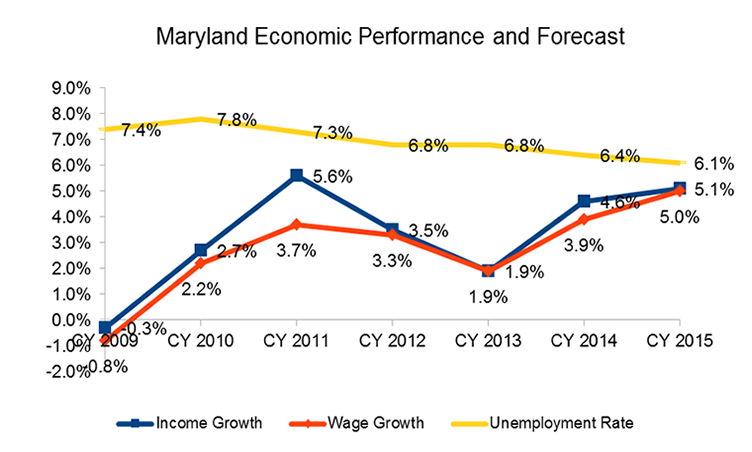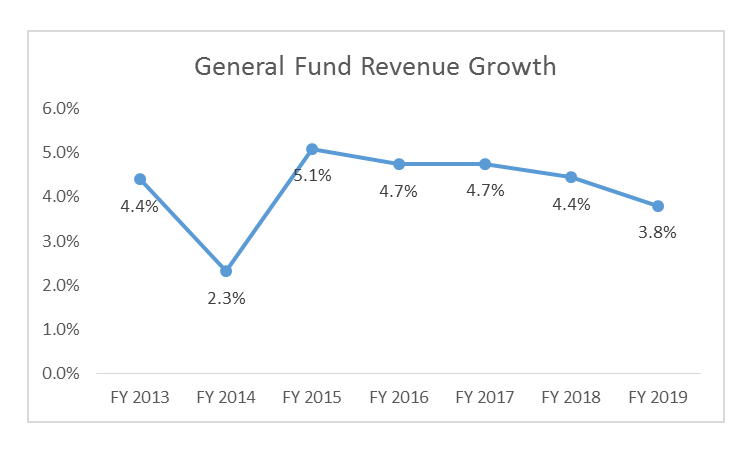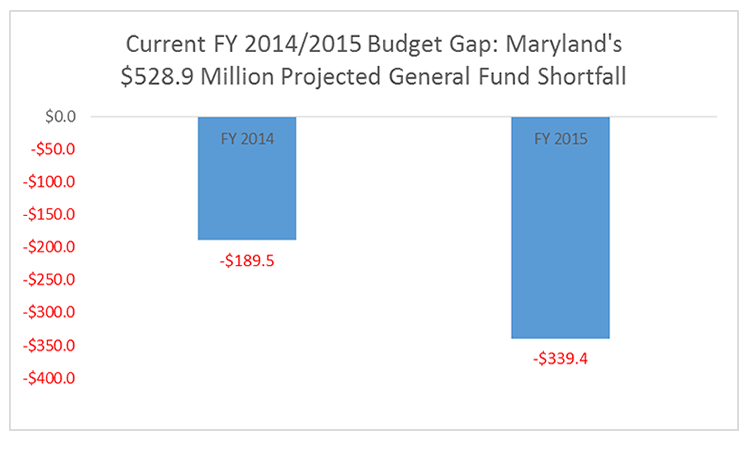Choices and Challenges: Maryland's Budget Outlook & Governor's Upcoming FY 2015 Budget -Part 1
In the coming days, we will be providing an overview of Maryland’s budget and budgeting process in advance of the release of Governor O’Malley’s FY 2015 budget, which is expected on January 15.
Today we will start with a general overview of the budget process in Maryland and the economic factors that will set the parameters within which state lawmakers will craft the budget.
Maryland’s Budgeting Process
- The budget must be balanced – both the Governor’s budget, which must be introduced by January 15, as well as well as the final budget that the General Assembly passes in April
- The Governor’s Budget will include an Operating Budget, which funds Local Aid, State Agencies and Entitlements, like Medicaid, and a Capital Budget, which funded $1.5 billion in capital projects such as school construction in the current FY 2014.
- The Governor may also introduce additional Supplemental Budgets later in legislative session. These supplemental budgets must also be balanced. The Governor can fund deficiencies in Supplemental Budget.
- To balance spending and revenue, the Governor’s proposed budget uses December revenue estimates; and the legislature’s final budget uses March estimates.
- The General Assembly can not add money to the Governor’s recommended spending; but legislature can raise revenues, cut spending and move money around to balance budget.
The state ended 2013 with an annual unemployment rate of 6.8% and slowing wage and income growth. Strong stock market performance and recovering real estate market led to surging capital gains growth and offset sluggish wage and income growth.
General Fund revenue growth tends to track state wage and income growth. Indeed, a drop in wage and income growth in 2013 results in sluggish General Fund revenue growth for the current fiscal 2014, and the September and December BRE revenue write-downs. Economic forecasts for 2014 and 2015 show improving wage and income growth, and estimated revenue growth for future years mirrors the economic trends.
Maryland’s reliance on federal spending and employment buoyed state economy during worst of recession. Recent federal tax and budget actions, including sequestration and shutdown, and continuing uncertainty have dragged on the state economy.
- The October 2013 government shutdown Maryland an estimated $5 million per day.
- There are roughly 120,000 federal employees in Maryland, or 5% of the state workforce.
While the recent Congressional budget deal is encouraging, it is a minor victory. The federal budget is still funded at inadequate levels; spending levels for non-defense discretionary expenditures are historically low and are forecast to drop to lowest level on record (1963) as share of GDP. The deal extended some sequestration cuts, mainly in Medicare provider payments, for 2 years to 2023. And the debt ceiling debate is again looming. Maryland has created a $100 million fund to offset federal action. Out of this fund, Maryland has thus far distributed $9 million to Head Start, substance abuse prevention/treatment and seniors in September, all before the October government shutdown. The prolonged shutdown likely cost a substantial portion of fund balance. Thus, while federal action has recently been more promising, there is still much work to be done, and recent history suggests that Maryland must be prepared for disruptions and decreased revenue that result from federal actions.
- The Board of Revenue Estimates (BRE) forecasts state revenue collections for current and upcoming budgets three times each year in March, September, and December. Due to slow economic growth, the BRE dropped current year fiscal 2014 revenue estimates by $62 million in September and another $102 million in December. Last month, the BRE also increased FY 2015 revenue estimates by $144 million to just over $16 billion.
- In December, the legislature’s Spending Affordability Committee made final recommendations on limiting spending growth in FY 2015 budget to 4%. As part of process, the Department of Legislative Services (DLS) also released projected changes in current budget and baseline for upcoming budget. The DLS FY 2015 baseline is $39.4 billion in total spending, and $16.5 billion in General Fund spending.
- The combined FY 2014 and FY 2015 projected General Fund budget gap is $528.9 million: $189.5 million in current fiscal 2014 budget and $339.4 million in upcoming fiscal 2015 budget.
Check back here for more information about the budget and state lawmakers begin their work.



